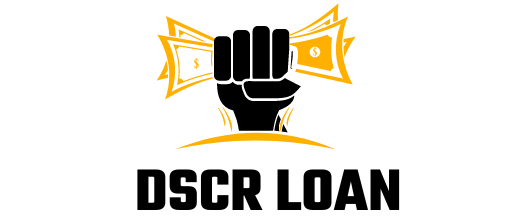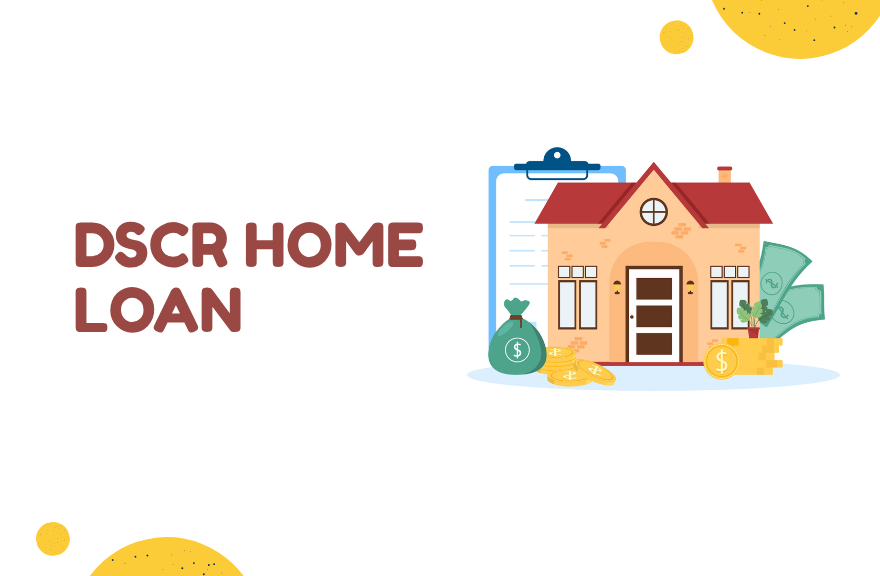Real estate investors are increasingly turning to DSCR home loans to secure funding without relying on traditional income documentation. These loans focus on the cash flow generated by the property rather than the borrower’s personal income. This makes them ideal for real estate professionals, self-employed individuals, and portfolio investors.
In this comprehensive guide, we will explore how DSCR home loans work, their benefits and requirements, and how to qualify for one. Whether you’re new to real estate investing or looking to expand your portfolio, understanding DSCR home loans can help you make smarter financing decisions.
What Is a DSCR Home Loan?
A DSCR (Debt Service Coverage Ratio) home loan is a type of mortgage designed for real estate investors. Unlike conventional loans that require proof of personal income, DSCR loans assess whether the property’s rental income can cover the mortgage payment.
DSCR Formula
The basic formula for DSCR is:
DSCR = Gross Rental Income / Monthly Debt Obligation
A DSCR of 1.0 means the property generates just enough income to cover the mortgage payment. A DSCR greater than 1.0 indicates positive cash flow.
Why DSCR Matters
The higher the DSCR, the lower the perceived risk to the lender. A strong DSCR demonstrates that the property can sustain itself financially.
Key Features of DSCR Home Loans
DSCR home loans come with unique features that differentiate them from traditional mortgage options. Here are the core elements that define this loan type:
- No Requirement for Personal Income Verification: Borrowers aren’t required to submit pay stubs, tax returns, or income statements.
- Property-Based Qualification: Approval is based on the rental income potential of the property rather than the borrower’s income.
- Quick Processing Timeline: With simplified documentation, these loans often close faster than conventional mortgages.
- Applicable to a Wide Range of Properties: Investors can use DSCR loans for single-family homes, multi-family units, and short-term rentals.
- Investment-Only Use: These loans are tailored exclusively for investment properties, not for primary residences.
Benefits of DSCR Loans for Investors
DSCR loans are particularly beneficial for real estate investors who want to focus on a property’s earning potential rather than their income. These benefits make DSCR loans an appealing option for scaling rental portfolios efficiently.
Streamlined Qualification
Lenders evaluate the property’s potential to generate income, which simplifies the underwriting process. This is ideal for:
- Self-employed individuals
- Retirees
- Foreign nationals
- Investors with complex income structures
Faster Loan Approvals
Because lenders don’t require W-2s, tax returns, or employment verification, the loan process moves more quickly.
Portfolio Growth
DSCR loans allow investors to scale their portfolios without being limited by personal income caps. This is essential for those looking to build wealth through multiple rental properties.
Flexible Property Types
These loans can be used for:
- Single-family rentals
- Duplexes, triplexes, and fourplexes
- Condominiums and townhomes
- Short-term rentals and Airbnb properties
Typical DSCR Loan Requirements
While requirements can vary by lender, most DSCR home loan programs in the U.S. follow these general criteria:
- Minimum DSCR Ratio: Usually 1.0 or higher, though some lenders may accept a ratio as low as 0.75 with a larger down payment.
- Credit Score: A minimum credit score of 620 is often required, though stronger scores improve loan terms.
- Down Payment: Typically ranges from 20% to 30% depending on the lender and the DSCR ratio.
- Rental Income Documentation: Valid lease agreements or a market rent estimate from a licensed appraiser are required.
- Ownership Structure: Properties may be titled in the borrower’s name or through a legal entity such as an LLC.
How to Calculate Your DSCR
Let’s assume the following:
- Monthly rental income: $2,800
- Monthly mortgage payment (PITI): $2,000
DSCR = $2,800 / $2,000 = 1.4
A DSCR of 1.4 shows that the rental income exceeds the debt obligation by 40%, making this a strong candidate for a DSCR loan.
DSCR Loan Terms at a Glance
| Feature | Details |
|---|---|
| Loan Amount | $100,000 – $5,000,000+ |
| Credit Score | 620+ |
| Minimum DSCR | 1.0 (0.75 in some cases) |
| Down Payment | 20% – 30% |
| Term Length | 30-year fixed, interest-only available |
| Prepayment Penalty | Common (1–3 years) |
| Property Type | SFR, 2-4 units, condos, Airbnb |
Pros and Cons of DSCR Home Loans
Debt Service Coverage Ratio (DSCR) loans offer an attractive financing option for real estate investors who want to qualify based on their property’s income rather than personal income. While they provide several advantages, they also come with trade-offs that borrowers should consider.
Pros
- No Personal Income Verification: DSCR loans focus on the cash flow of the property, so borrowers don’t need to provide W-2s, tax returns, or pay stubs.
- Faster Approval Process: With fewer documents required, approval can be quicker compared to traditional mortgages.
- Ideal for Real Estate Investors: Great for borrowers with multiple investment properties who prefer not to use their personal DTI (debt-to-income) ratio.
- Flexible Loan Options: Available for various property types including single-family homes, multi-units, and short-term rentals.
- Credit Flexibility: Some lenders are willing to work with lower credit scores if the property generates strong income.
Cons
- Higher Interest Rates: These loans often come with higher interest rates compared to conventional loans.
- Larger Down Payments: Lenders may require down payments of 20–25% or more.
- Strict DSCR Requirements: If the property doesn’t generate enough income to meet the required DSCR ratio, loan approval may be denied.
- Limited Lender Options: Not all banks or lenders offer DSCR loans, so shopping around is necessary.
- Fewer Protections for Owner-Occupants: Since these loans are designed for investment properties, they may not offer the same consumer protections.
DSCR Loan vs Traditional Loan
| Feature | DSCR Loan | Conventional Loan |
| Qualification | Property income-based | Personal income-based |
| Speed | Faster approvals | Slower underwriting |
| Documentation | Limited financials | Full income documentation |
| Investment Limits | Fewer restrictions | Limited number of properties |
| Down Payment | 20–30% | As low as 15% |
Best DSCR Lenders in 2025
Several lenders in the U.S. are known for offering competitive and flexible DSCR home loan programs tailored for real estate investors. Here are a few standout options to consider:
- AmeriHome Mortgage: Offers nationwide DSCR loan programs with flexible terms suited to investors looking to scale their portfolios.
- Kiavi: Known for its streamlined application process and investor-focused financing, especially for rental properties.
- Visio Lending: Specializes in DSCR loans for both long-term and short-term rental investments.
- LendingOne: Provides DSCR solutions that cater to single-family and small multifamily investment properties.
Each lender has its own specific criteria and strengths, so it’s advisable to compare programs and get pre-qualified to find the best fit for your investment goals.
How to Apply for a DSCR Home Loan
Applying for a DSCR home loan in the U.S. involves a streamlined process focused on the property’s income potential rather than your income. Here are the typical steps:
1. Find a DSCR Lender
Research and contact U.S.-based lenders or mortgage brokers who specialize in DSCR loans. Many non-QM lenders and private institutions offer these programs.
2. Gather Property Income Documents
Submit the property’s rent roll, lease agreements, or short-term rental income reports to demonstrate the income it generates.
3. Order a Rental Appraisal
The lender will typically require a fair market rent estimate (Form 1007 for single-family homes or Form 1025 for 2–4 unit properties), conducted by a licensed appraiser.
4. Provide Basic Financials
You’ll need to submit:
- Government-issued ID (e.g., driver’s license or passport)
- Bank statements (usually 1–3 months)
- Credit report authorization
5. Calculate DSCR Ratio
Lenders will calculate your Debt Service Coverage Ratio to ensure the rental income covers the monthly loan payment—usually aiming for a DSCR of 1.0 or higher.
6. Review Loan Terms
Once your property and documents are reviewed, the lender will provide proposed loan terms. Compare interest rates, down payment requirements, and fees.
7. Underwriting and Closing
After approval, the loan goes through underwriting, and once cleared, you’ll sign the closing documents to finalise the deal.
Case Study: Scaling with DSCR Loans
Jane is a full-time real estate investor who earns most of her income through Airbnb. Because her tax returns don’t reflect stable income, conventional lenders have declined her applications.
She turns to a DSCR lender, providing rental income records for her existing property. Her calculated DSCR is 1.35. She qualifies for a 75% LTV loan and uses the proceeds to acquire a second rental property. Within 18 months, she repeats the process twice more, building a three-property portfolio.
Tips to Improve Your DSCR Approval Odds
Boosting your chances of DSCR loan approval requires preparation and attention to detail. Here are some effective strategies:
- Show Strong Rental Income History: Present consistent lease agreements and proven rental income.
- Strengthen Your Credit Profile: Aim for a credit score above 700 to secure better terms.
- Invest in High-Demand Locations: Choose properties in areas with low vacancy rates and strong rental markets.
- Use an LLC When Appropriate: Holding property under an LLC can streamline underwriting and add a layer of asset protection.
- Organize Your Financials: Provide clear, accurate documentation of income and expenses to demonstrate property performance.
Conclusion:
DSCR home loans provide a streamlined and scalable path for real estate investors. If you rely on rental income rather than traditional employment income, these loans may be your best option for expanding your portfolio.
By focusing on a property’s ability to cover its debt, DSCR loans eliminate many of the barriers associated with traditional underwriting. With flexible terms, quick approvals, and property-based evaluations, investors can take full control of their financing strategies.
Before proceeding, compare multiple DSCR lenders, understand the terms of the loan, and make sure the property meets income standards. With the right preparation, DSCR home loans can become a powerful tool in your investment journey.
FAQs
What is a good DSCR ratio?
A DSCR of 1.25 or higher is considered strong. However, some lenders accept ratios as low as 1.0 or even 0.75 with compensating factors.
Can I use short-term rental income to qualify?
Yes. Lenders may require 12-month rental history or use an appraiser’s market rent if history is unavailable.
Do DSCR loans include prepayment penalties?
Many DSCR loans come with 1–3 year prepayment penalties. It’s important to review your loan terms before signing.
Are DSCR loans available for primary residences?
No. DSCR loans are strictly for non-owner-occupied investment properties.
How many DSCR loans can I take out?
There is generally no hard limit. Lenders evaluate each deal based on the property’s cash flow and your existing portfolio performance.

Introducing Emily Parker, a seasoned professional with over 5 years of expertise in DSCR loans. With her extensive knowledge and experience in the field, Varsha has consistently demonstrated a deep understanding of DSCR loan intricacies and a proven track record of delivering successful outcomes for her clients.

